
October started with turbulence across politics and crypto markets. In the United States, the federal government shutdown has already sidelined hundreds of thousands of workers and is putting billions of dollars in weekly economic activity at risk.
Meanwhile, the cryptocurrency market is showing remarkable strength: Bitcoin surged past $120,000, Ethereum reached its highest level in two weeks, and trading volume skyrocketed to more than $193 billion in just 24 hours.
This contrast sets up a striking scenario: while traditional sectors face budget cuts and operational delays, crypto assets are attracting institutional inflows and reviving expectations for record highs.
The key question now is how the political gridlock in Washington and the renewed optimism in digital markets could converge to define the trajectory of the final quarter of 2025.
2025 U.S. Government Shutdown: What Happened, Who’s Affected, and What It Means for the Economy
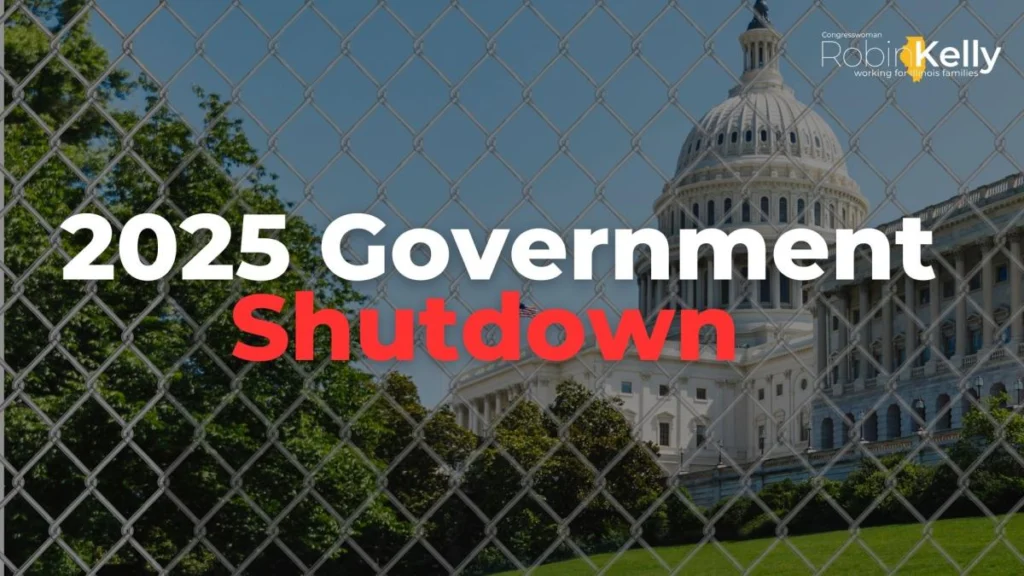
Source: CongressWoman Robin Kelly
The 2025 U.S. federal government shutdown officially began at 12:01 a.m. on October 1st after Congress failed to approve a new federal budget for the fiscal year. The deadlock was caused by disputes over spending cuts, healthcare subsidies, and foreign aid allocations.
This shutdown is unique because the White House preemptively instructed federal agencies to prepare for mass layoffs, not just temporary furloughs—suggesting a deeper structural shift in public employment strategy.
How Many Federal Employees Are Affected by the Shutdown?
- 800,000 federal workers have been furloughed without pay.
- Another 700,000 are required to work but are not receiving paychecks.
- Health agencies like the CDC and NIH are operating at reduced capacity, with 41% of HHS staff furloughed.
- Essential services such as Medicare, Medicaid, TSA, and Social Security continue to operate.
Even the White House furloughed one-third of its staff, while agencies like the Office of Management and Budget (OMB) remain operational.
Economic Impact: Billions Lost Weekly, Market Uncertainty Grows
The shutdown is having an immediate impact on the U.S. economy:
- The White House estimates $15 billion in GDP losses per week.
- EY Parthenon projects $7 billion in lost output per week.
- Consumer spending could decline by $30 billion if the shutdown lasts a full month.
- Unemployment may rise as delayed payments and canceled contracts ripple across industries.
These disruptions increase the risk of a weakened Q4 GDP, further shaking market confidence.
Shutdown Effects on Public Services, Travel, and Research
- National parks, grant programs, federal permits, and public health surveillance are delayed or suspended.
- Air travel delays are possible due to reduced staffing and inspection schedules.
- Scientific research funded by NIH and CDC is paused, potentially impacting health and innovation outcomes.
Political Fallout: State Funding Frozen, Bipartisan Tensions Rise
The Trump administration froze major federal funds targeted at Democratic-led states, including:
- $2.1 billion for Chicago’s public transportation upgrades
- $18 billion in New York infrastructure projects
- $8 billion in renewable energy initiatives
This move is seen by many analysts as a political maneuver to pressure opposition lawmakers. Critics argue that leveraging the budget process for partisan goals may deepen legislative gridlock.
What’s Different About the 2025 Shutdown?
- Permanent layoffs are on the table, not just temporary furloughs.
- Agencies were asked in advance to submit Reduction In Force (RIF) plans.
- This is the first shutdown to weaponize state-level funding freezes.
- Long-term damage to health research, economic data reporting, and consumer trust is likely if the impasse continues.
How Is the Crypto Market Reacting to the 2025 U.S. Government Shutdown?
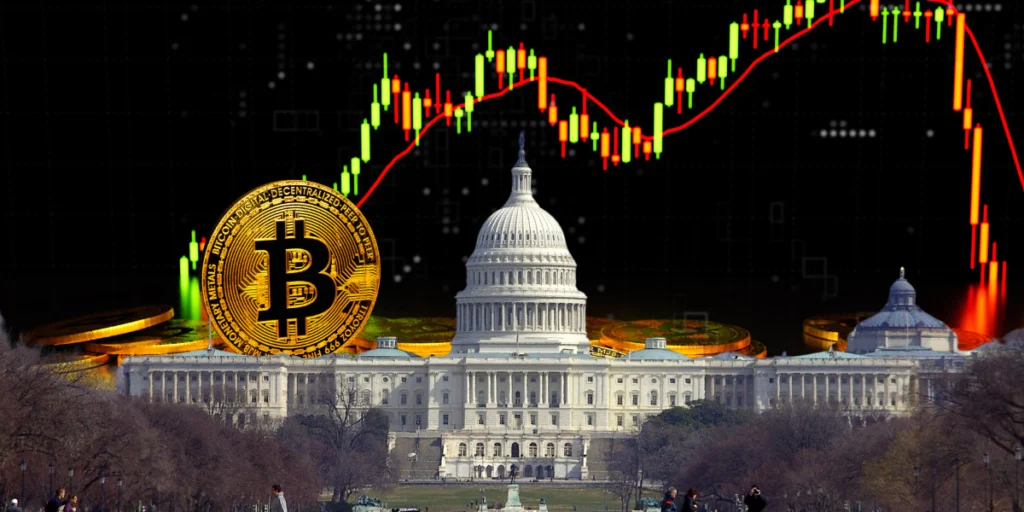
The crypto market’s response to the 2025 government shutdown has been mixed but increasingly relevant—reflecting both macroeconomic sensitivity and growing investor interest in crypto as an alternative to traditional finance.
Bitcoin and Ethereum React to Political Uncertainty
- Bitcoin (BTC) surged past $120,000 in the same week the shutdown began. While correlation doesn’t imply causation, analysts from CryptoSlate and Investors.com suggest that institutional inflows into Bitcoin ETFs may partially reflect a hedge against fiscal instability.
- Ethereum (ETH) also climbed, trading near $4,490, as broader market optimism returned despite the macro risks.
- Trading volume increased across centralized and decentralized exchanges, showing renewed participation as traditional markets became more cautious.
Shutdown Delays May Stall Crypto Regulations & Approvals
The shutdown affects more than just price—it also impacts regulatory timelines:
- SEC and CFTC personnel furloughs may delay reviews of crypto ETF proposals, enforcement actions, and policy updates.
- Some analysts warn that shutdown-related delays could push stablecoin regulations, DeFi oversight, and token classification guidance further into 2026.
- Crypto lobby groups argue this is a key moment where decentralized infrastructure proves more resilient than centralized systems burdened by politics.
Total Cryptocurrency Market Cap Rises Amid Surge in Trading Volume and Investor Optimism
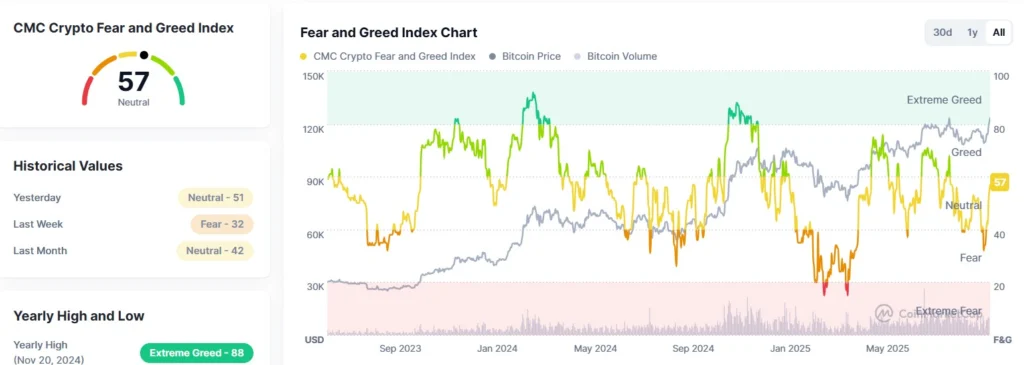
Source: Coinmarketcap
The total cryptocurrency market capitalization increased by 1.4%, reaching US$ 4.22 trillion. Daily trading volume also surged to around US$ 193 billion, signaling stronger activity across exchanges and renewed investor confidence.
Bitcoin Price Today
- Bitcoin (BTC) gained nearly 1%, trading close to US$ 119,909.
- Key support levels: US$ 117,000, US$ 113,500, US$ 106,900.
- Major resistance levels: US$ 124,600, US$ 128,000, US$ 130,000.
Analysts note that BTC is currently trading in a liquidity-heavy zone, which could lead to short-term consolidation before the next breakout.
Ethereum Performance
- Ethereum (ETH) rose 1.5% to around US$ 4,467.
- If momentum continues, ETH could target US$ 4,750–5,000, while a breakdown below US$ 4,300 may trigger selling pressure.
Altcoin Leaders and Losers
- BNB (Binance Coin) outperformed, jumping nearly 5%.
- Other major altcoins, including Solana (SOL) and XRP, also traded in the green.
- Dogecoin (DOGE) was the only top-10 crypto to dip slightly, losing about 0.3%.
ETF Inflows Drive Institutional Demand
- U.S. Bitcoin ETFs saw inflows of US$ 627 million on October 2, bringing cumulative inflows to over US$ 59 billion.
- Ethereum ETFs attracted US$ 307 million, pushing total inflows to US$ 14.19 billion.
- BlackRock and Fidelity were the largest contributors to these institutional inflows, reflecting sustained Wall Street interest in crypto assets.
Market Sentiment & Macro Impact
- The Crypto Fear & Greed Index climbed to 57, up from 51, signaling growing optimism among investors.
- Crypto prices tracked gains in U.S. stock indices (S&P 500, Nasdaq, Dow), showing a strong correlation with risk-on sentiment.
- However, potential risks remain, including U.S. government shutdown concerns and regulatory delays from the SEC.
Bitcoin Surpasses $120,000 After a 10% Weekly Surge
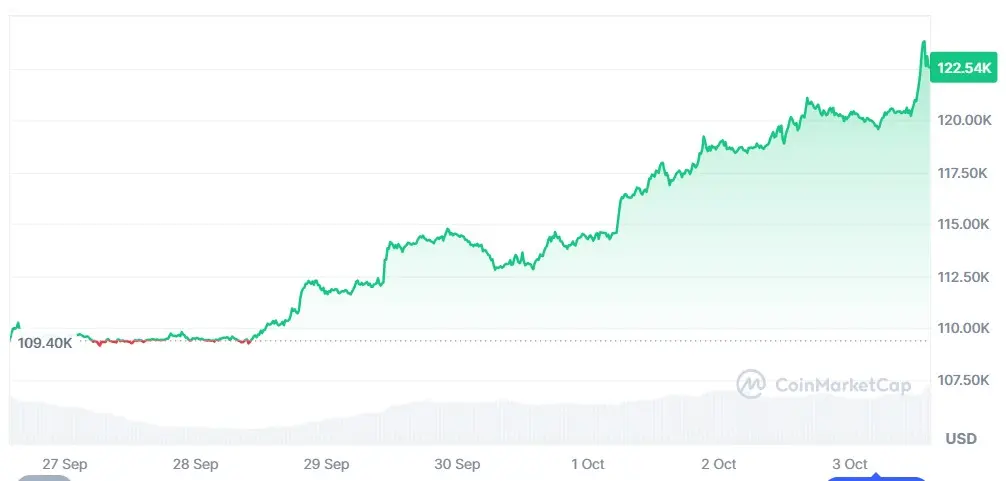
Source: coinmarketcap
Bitcoin (BTC) broke past the $120,000 mark this week, gaining 10% in just seven days. The rally has reignited expectations that the world’s largest cryptocurrency could hit a new all-time high this quarter, according to market analysts.
Bitcoin Breaks $120,000 and Nears All-Time High
Market data shows Bitcoin reached $120,443, climbing 1.5% on the day of publication alone
This level hadn’t been seen since BTC peaked at $124,100. For asset managers like Grayscale, the move could mark the start of a run toward a new record.
What Drove Bitcoin’s Rally?
Several factors explain the recent surge:
- Store-of-value demand: Investors turned to BTC amid macroeconomic uncertainty.
- Institutional demand: Funds and asset managers have been increasing their exposure.
- Seasonal trend: September is typically weak, but Q4 has historically been a strong period for Bitcoin, according to analysts.
- Psychological effect: Breaking symbolic levels like $120,000 sparks FOMO (fear of missing out) among investors.
Altcoins Rally Alongside Bitcoin
Along with BTC, several altcoins also posted strong gains:
- Astar (ASTR): +10.3% in 24h
- BNB: +6%
- Ethereum (ETH), Solana (SOL), and XRP also recorded notable increases
This movement highlights how Bitcoin’s rally tends to lift other digital assets, driving broader market momentum.
What to Expect in the Coming Months
With Bitcoin holding above $120,000, analysts see room for another all-time high. Still, volatility remains a major risk:
- Sharp corrections can follow big rallies.
- Global regulations and political decisions could influence price direction.
- Smaller altcoins may rise faster but also correct more aggressively.
The $120,000 milestone is a key marker for the crypto market. If the trend continues, BTC could set a new record this quarter. For investors, cautious optimism is key: keeping an eye on macroeconomic factors, institutional flows, and altcoin performance will be essential.
Ethereum Hits 2-Week High: What’s Next for ETH?
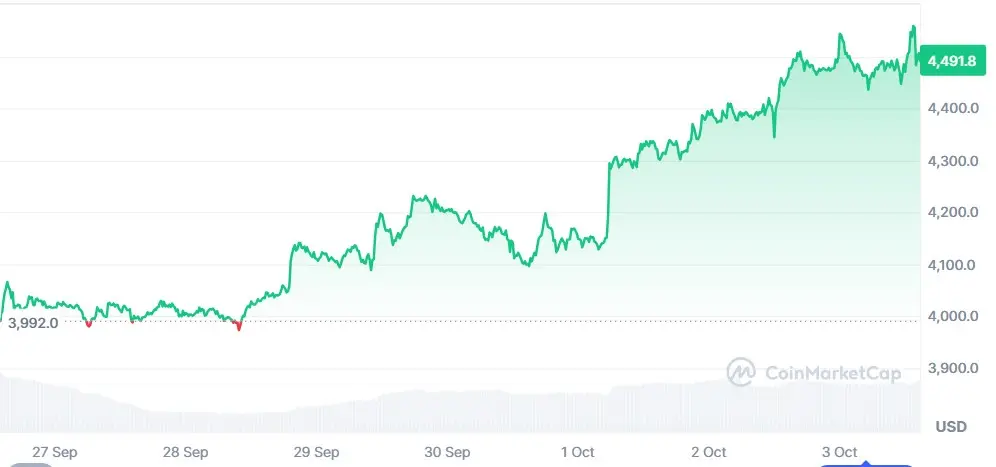
Source: Coinmarketcap
According to market data, Ethereum rose 1.6% in 24 hours, reaching $4,500. Despite September being historically a weak month for cryptocurrencies, ETH closed the third quarter with a 74% gain, according to CoinGlass.
In 2025 so far, Ethereum is up 34%, solidifying its position as the second-largest digital asset by market capitalization, behind only Bitcoin.
Options Market Signals Optimism
One positive indicator comes from the derivatives market:
- Call options have seen higher demand than put options in the short term, reflecting bullish expectations.
- However, long-term puts still hold high premiums, showing that some investors remain cautious.
This behavior suggests moderate optimism: investors expect gains in the short term but don’t rule out stronger corrections ahead.
Staking and Reduced ETH Supply
Another factor supporting Ethereum’s rally is staking, which keeps a portion of the supply locked in the network. With less ETH available for trading, any uptick in demand can put upward pressure on prices.
If institutional treasuries (Digital Asset Treasuries) resume accumulating ETH, the buying pressure could accelerate the push toward new levels.
What to Expect for Ethereum
Three scenarios stand out in the short term:
- Continuation of the rally — breaking near resistance and attracting institutional capital.
- Moderate correction — if the market takes profits after the recent recovery.
- Consolidation — ETH may move sideways before gaining traction to attempt new highs.
Ethereum reaching $4,500 shows that the market remains confident in the asset, even during a seasonally weak period. If institutional demand grows and staking continues to limit supply, ETH could be set for a new rally in Q4.
For investors, the moment calls for cautious optimism, keeping a close eye on technical indicators and the global macroeconomic backdrop.
The 5 Cryptocurrencies That Gained the Most in September 2025
While the crypto market faced ups and downs in September, some altcoins surprised investors with impressive rallies. Among the 100 largest digital assets by market capitalization, five cryptocurrencies led the gains and stood out.
1. MYX Finance (MYX) — +1,230% in the month
The biggest highlight was MYX Finance (MYX), which skyrocketed 1,230% in September. Previously little known, the token gained momentum with speculative interest and quickly landed on the radar of high-risk traders.
2. MemeCore (M) — +226%
MemeCore (M) rode the memecoin wave, soaring 226%. These tokens often rely on strong communities and virality, attracting investors chasing fast profits.
3. Pump.fun (PUMP) — +61%
Pump.fun (PUMP) jumped 61% in September. The project is tied to a launchpad on the Solana network, which has been gaining popularity thanks to its low costs and high speed.
4. Mantle (MNT) — +48%
Governance token Mantle (MNT) rose 48%, solidifying its position among promising altcoins. Mantle is a scalability solution for Ethereum, drawing attention for its smart contract–compatible technology.
5. Provenance Blockchain (HASH) — +37%
HASH, the token of Provenance Blockchain, gained 37% in the month. It stands out in the Osmosis ecosystem and entered the list of the top 100 tokens by market cap, reinforcing its growth potential.
Why Did These Cryptocurrencies Surge?
- Low market cap: Smaller tokens react more sharply to new capital inflows.
- Active community and hype: Projects like MemeCore and Pump.fun thrive on viral engagement.
- Blockchain infrastructure: Networks like Mantle attract long-term investors with real utility.
- Listings and news: Every new partnership or integration often sparks a quick market response.
What Investors Should Keep in Mind
Despite the impressive rallies, these cryptocurrencies carry high risks:
- Extreme volatility: Sharp drops often follow rapid gains.
- Low liquidity: Small or new tokens are more prone to manipulation.
- Speculation vs. fundamentals: Not every surge is backed by strong tech or adoption.
- Regulatory risk: Authorities may step in against less transparent projects.
Swift Integrates Blockchain to Enable Tokenized Payments and Stablecoin Transfers Between Banks
Swift, the world’s largest financial messaging network, is launching a blockchain-based platform to support tokenized payments and stablecoin transactions across global banks.
As reported by the Financial Times, the initiative will allow over 11,000 financial institutions in 200+ countries to settle tokenized assets and stablecoins using a standardized blockchain framework. The new infrastructure aims to:
- Accelerate cross-border payments
- Lower settlement costs
- Improve real-time transaction transparency
By incorporating distributed ledger technology (DLT), Swift intends to future-proof its role in the global financial system and maintain relevance in a world rapidly shifting toward blockchain-native finance.
Why This Matters for Crypto and TradFi
The move bridges the gap between traditional finance (TradFi) and decentralized finance (DeFi):
- Banks will be able to process stablecoin payments and tokenized securities on the same rails used for SWIFT messages.
- Institutions testing the integration include BNP Paribas, Deutsche Bank, and SIX Digital Exchange, signaling serious adoption potential.
This integration positions Swift as a key player in tokenized asset settlements, a market projected to reach $16 trillion by 2030 (Boston Consulting Group estimate).
U.S. Senate Considers “De Minimis” Tax Exemption for Small Crypto Transactions
The U.S. Senate Finance Committee held hearings this week focused on updating the federal tax framework for digital assets, according to Axios. A central topic of discussion was the proposed “de minimis exemption”, which would allow small crypto transactions—typically under $50 or $200—to be exempt from capital gains tax reporting.
Under current U.S. law, every time someone spends cryptocurrency—even for minor purchases like coffee or groceries—it technically triggers a taxable event. This creates a major usability hurdle for everyday crypto payments, as users must track price changes and file capital gains even for microtransactions.
Lawmakers across party lines are now debating whether a threshold exemption could simplify compliance, reduce friction for retail adoption, and make it easier to use cryptocurrencies like Bitcoin and stablecoins in real-world commerce.


